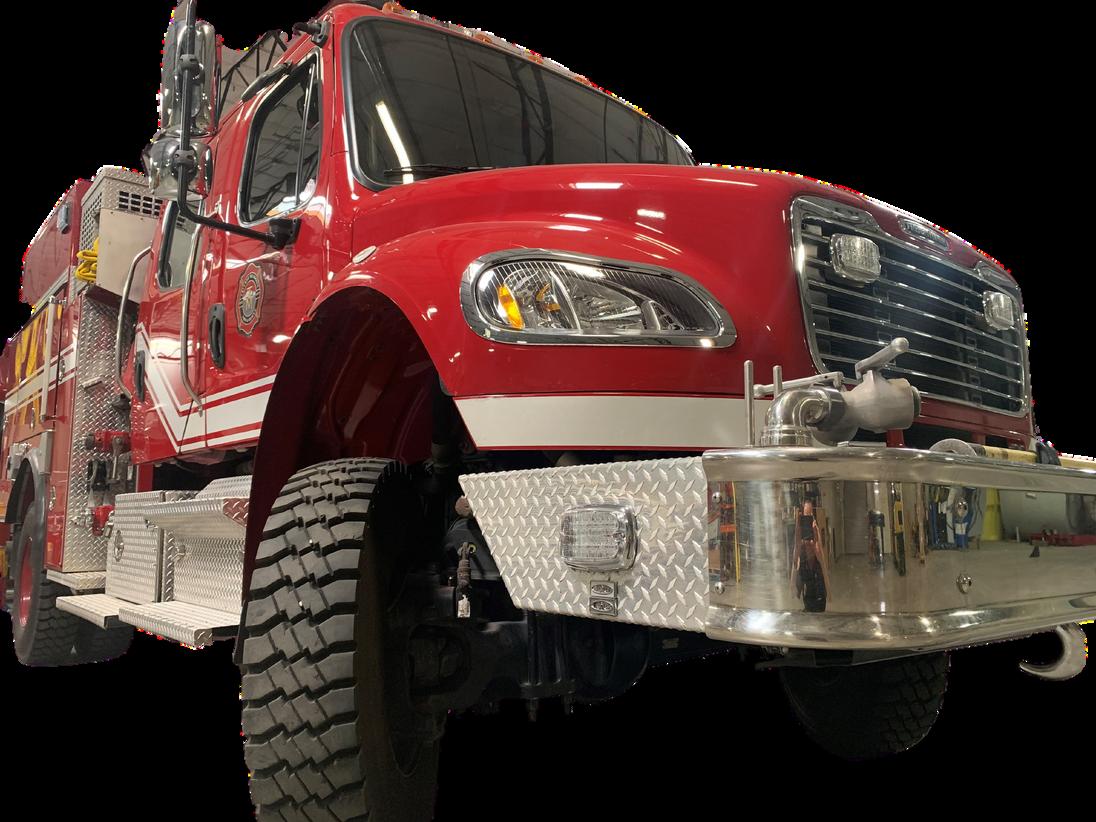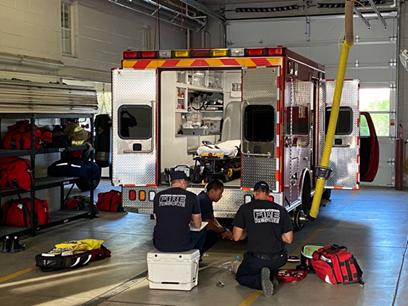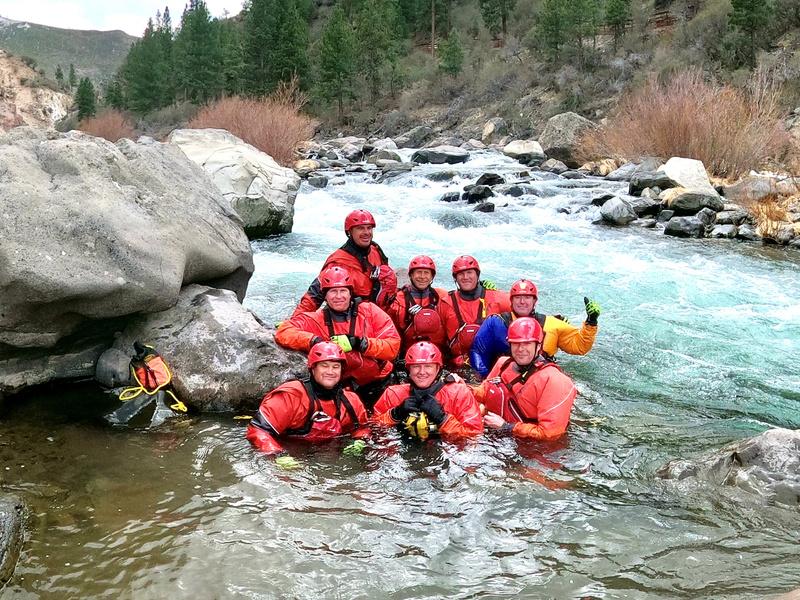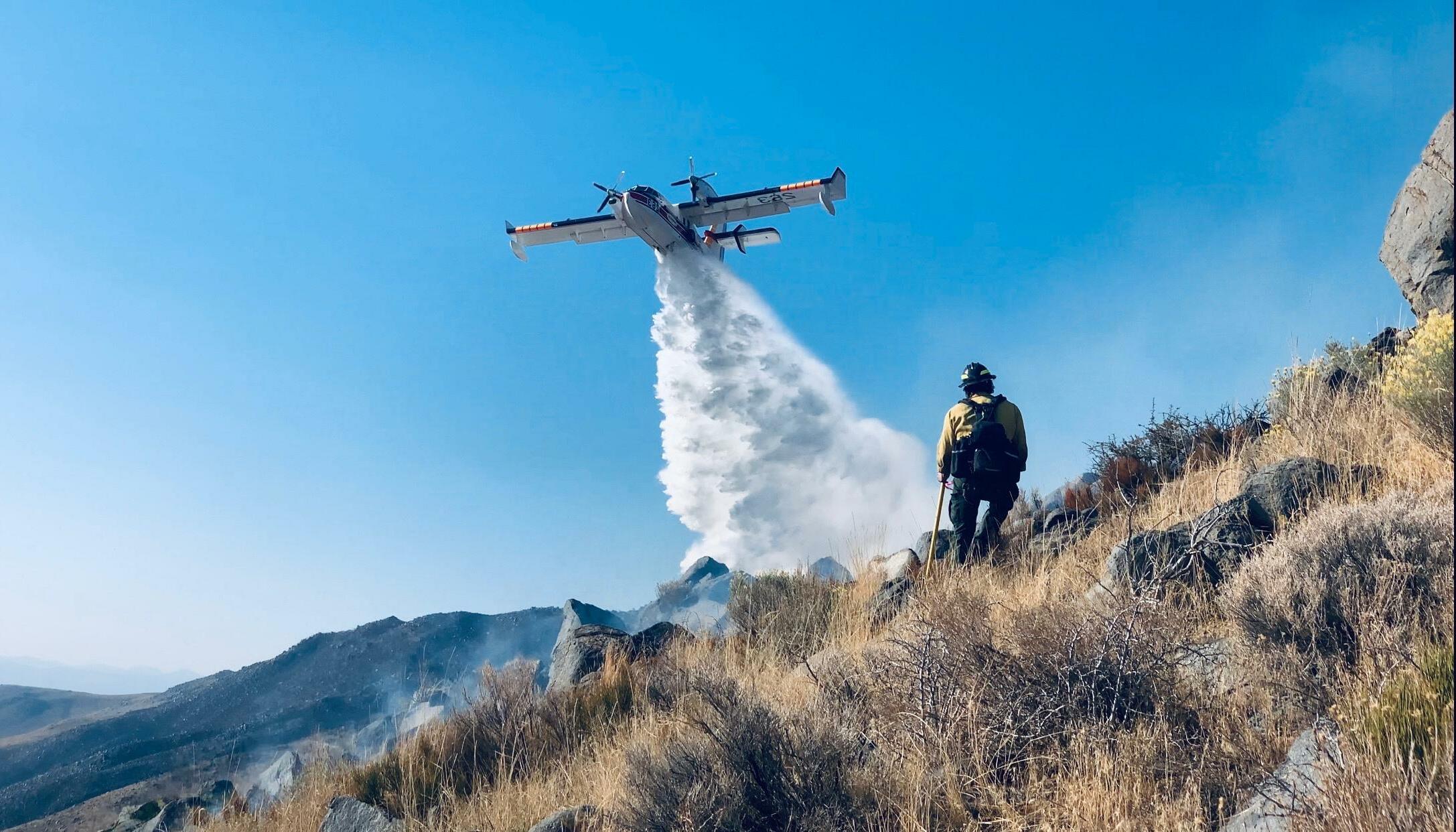ReporttotheCommunity
TruckeeMeadowsFire&Rescue 1972 - 2022 Washoe County, Nevada



TruckeeMeadowsFire&Rescue 1972 - 2022 Washoe County, Nevada


The year 2022 marks the 50th anniversary of Truckee Meadows Fire Protection District! The Board of County Commissioners created the district, by Ordinance, on February 10th, 1972. The district was formed because of increased population growth and the number of emergencies in the County.
Since 1972, the staff of Truckee Meadows Fire Protection District are proud to provide the highest quality of fire and EMS services to our residents and guests The technology of firefighting has changed and evolved but what has not changed is our dedication to service and protection of the community

We honor those who served the previous 50 years; many of whom purchased their own equipment and tools. They put in a lot of time and talent to protect the community, and we are grateful for their service and heritage. It is our desire to carry on the great tradition of those who came before us!
Prior to the district’s formation, fire protection was provided through various volunteer firefighting companies in the unincorporated portions of Washoe County, including Washoe Valley, Pleasant Valley, Brown-Huffaker, Hidden Valley, Sun Valley, Panther Valley, Black Springs, Lemmon Valley, Silver Lake, Cold Springs, and Wadsworth Truckee Meadows Fire Volunteer Program, originally called Sierra Meadows Volunteers, was created in January 1975 and provided training and support to the volunteer groups As the years went on, career firefighters were added and a transition from volunteer to career personnel was necessary.
The southern areas of the County were protected by Sierra Forest Fire Protection District, under the administration of the Nevada Department of Forestry – eventually becoming the Sierra Fire Protection District.
Both the Sierra Fire Protection District and Truckee Meadows Fire Protection District merged operations and budget in 2012 by way of a contract, and legally combined in 2015 into one District, TMFPD
After negating a contract for service with the City of Reno in 2012, the district assumed its own operation as a standalone agency once again. The district grew from 98 employees to over 190 in the last 10 years.
With grateful hearts, we thank you for supporting us.











Truckee Meadows Fire Protection District is governed by five Commissioners who are also the Washoe County Board of Commissioners. Truckee Meadows Fire and Rescue (our branded name for the district) is closely aligned with Washoe County but is a separate taxing entity that maintains its own budget authority
The district conducts its official business on the first Tuesday of the month. Our agenda and public notices may be found on our website: www.tmfpd.us.


This year marks the 50th anniversary of Truckee Meadows Fire Protection District On behalf of the entire Board of Fire Commissioners, we want to thank our community for its support and your individual engagement in fire safety

Whatever the type of emergency, our highly qualified staff is ready to respond. Our firefighters work hard to prevent fires and provide active programs that assist you with removing hazardous vegetation. Our Green Waste program is free to all residents of the County.
Over the last several months and through a partnership with NV Energy, the District has added more than 25 wildland firefighters and fuels crew members and many pieces of specialized equipment, all designed to decrease the risks of wildfire. We have also been successful in securing many hundreds of thousands of grant dollars that support fuel reduction programs in critical areas.
Please take a moment to review this report. It details the many services TMFR provides. We are here to assist you and we wish you all safety for the coming year
 Chair
Vaughn Hartung,
Vaughn Hartung Chair District 4
Alexis Hill Vice-Chair District 1
Kitty Jung District 3
Bob Lucey District 2
Chair
Vaughn Hartung,
Vaughn Hartung Chair District 4
Alexis Hill Vice-Chair District 1
Kitty Jung District 3
Bob Lucey District 2
Who could forget the summer of 2021? Our air was severely degraded by smoke from wildfires burning throughout the region. The Mosquito Fire this summer also resulted in air quality warnings and made outdoor activity less than desirable and unhealthy.
Although fire is a natural part of the ecosystem, we work hard to keep fires from intruding into the built environment. We cannot accomplish this with fire suppression alone. Truckee Meadows Fire & Rescue has taken significant steps to actively remove fuels from hazardous areas and we applaud your individual efforts to create defensible space and clear your property of excess and dead vegetation. In addition, our Fire Prevention Division applies codes and standards to the development of new communities to ensure that defensible space and appropriate hardening of new buildings is accomplished from the start
TMFR staff invests a great deal of time in preparing and training for all types of emergencies, from vehicle accidents, to medical emergencies, rescues, fires, and hazardous materials. Our highly trained professionals have expertise in a broad array of firefighting, EMS, and rescue skills.

I want to thank you for supporting TMFR throughout the years, and especially this year, our 50th Anniversary. We are actively making plans to keep pace with the service demands now and in the future. In this 50th year of our service to you, I want to thank all the men and women who preceded our ranks and for their selfless service to the community.

If you have questions about your fire and safety issues, please feel free to contact us We would be happy to assist you
Charles A Moore Fire Chief

 Ketring Deputy Fire Chief
Way Deputy Fire Chief
Charles A. Moore Fire Chief
Chris
Ketring Deputy Fire Chief
Way Deputy Fire Chief
Charles A. Moore Fire Chief
Chris
As a full-service agency, TMFR provides services across a broad range of emergencies In other words, fire suppression is only one of the many emergencies that TMFR firefighters respond to.

TMFR covers unincorporated areas of Washoe County that are not within the boundaries of a municipality or protected by the North Lake Fire Protection District at the north end of Lake Tahoe.

All of our eleven (11) career fire stations are staffed 24/7 with firefighter paramedics.
Volunteers staff stations located at Silver Knolls, Palomino Valley, Pleasant Valley, and Washoe Valley - and in Rancho Haven, the District supports County volunteers.
The district maintains a high commitment to training in order to keep our skill levels proficient across many professional disciplines
In the modern delivery of fire services, responders must be skilled in a variety of disciplines. Structure fire response is a completely different set of strategies and tactics from wildland fires.





Hazardous materials, technical rescue require a significant amount of skill. Technical rescues vary from hillside, backcountry, water and entrapment. Paramedicine requires a rigorous amount of skill maintenance and on going training.
Coordinating the response to complex incidents also requires planning and training on deploying those resources, including aircraft and ground resources.
In the second half of 2021, the Truckee Meadows Fire Protection District and the Regional Emergency Medical Service Authority (REMSA Health) implemented a new partnership aimed at enhancing emergency services for the Northern Nevada region. The partnership comes as a response to Washoe County's rapid expansion and growth and the need to provide new solutions to pre-hospital care and response
This new partnership focuses on two initiatives aimed at expanding the availability of ambulances throughout the unincorporated areas, and also integrating dispatch and communications between the two organizations.

TMFR now provides ambulance response from Washoe Valley, Sun Valley, and Spanish Springs. These additional ambulances, staffed by TMFR paramedic firefighters, provide the versatility of using personnel to respond to medical emergencies while also leveraging their training as firefighters in order to respond to all other types of emergencies that the district handles. This added force of firefighters has enhanced the fire protection and staffing levels in those communities where the ambulances are based.


In December of 2021, REMSA's emergency communication center began receiving emergency calls from residents in TMFR's jurisdiction which require a response from the fire district. The combined dispatch services have increased information about patient acuity to the responding fire engines and ambulances
Additionally, REMSA-Health uses a system that sends the closest resource based on global positioning systems (GPS locations) which helps send the closest responder to the medical emergency, reducing response time.
All TMFR career fire engines and ambulances are staffed with firefighters trained as advanced life support (ALS) paramedics
TMFR uses data to identify trends, quantify activities, determine fire causes, plan the deployment of limited resources, and reduce the loss of life and property caused by fires.

Data is a critical business asset and an eff management of our resources. The district Incident Reporting System (NFIRS) to repor public and the U S Fire Administration NF standard that fire departments use to colle emergency response activities

Responses are categorized into nine (9) typ
Fire
Ruptures, Explosions, and Overheat (w Rescue and Emergency Medical Servic Hazardous Conditions (with no fire)
Service Call Good Intent Call False Alarm and False Calls Severe Weather and Natural Disaster Special Incident Types
A portion of the 2021 increase in responses is attributable to the COVID 19 pandemic Service demand often parallels population If population increases, it is anticipated the demand for emergency services will increase District staff are making plans to address services in a high growth environment.

The District operates two Battalions. The north battalion operates with one fewer fire station, despite answering a significant number of the total calls. The two fire stations with the lowest call volume are in the southern battalion.
The District is working on a plan to consolidate two stations in the south where call volume is low and move one crew to the north in a new and additional fire station near the Mustang exit.



Fires in 2021 - 324 Total. 2.74% of all responses
Structure fires account for 0.57% of all responses. The total number of acres burned in wildfires was approximately 539

The number of wildfires was 137. One hundred and four (105) wildfires occurred in the district and 32 were off district

There were 50 vehicle fires, and 45 other fires not associated with structures, wildlands or vehicles.


0 2,000 4,000 6,000 8,000
TMFR responds to these incidents at an Advanced Life Support (ALS) level, with State certified Paramedics responding on every engine throughout the District. Currently, TMFR has 126 certified Paramedics, and over 40 Advanced EMTs spread over our 11 stations. Over the last 18 months, TMFR has implemented a patient transport capability by utilizing 3 staffed ambulances located in Washoe Valley, Sun Valley, and Spanish Springs. These ambulances have dramatically reduced the time to provide care and deliver our citizens to definitive care at our local hospitals. They are also utilized in a mutual aid capacity to our regional partners when they experience a large volume of emergency incident requests in their jurisdictions



The training program within the EMS Division at TMFR is the most rigorous in the region All continuing education classes and clinical requirements are completed in-house by our cadre of experienced providers, instructors, and EMS Coordinators We are also expanding our influence through a cooperative agreement with TMCC that will give us the capability of training our internal Firefighter/EMTs to the Paramedic level.
Our Paramedic providers have the opportunity to branch out into specialty fields as the District expands and provide a higher level of care to the community we serve. These specialty programs include highly trained Hazardous Material Technician “Tox-Medics” to provide advanced treatments for toxicological emergencies. TMFR has also trained several members as instructors of Tactical Emergency Casualty Care (TECC) to work jointly with our Law Enforcement partners when responding to hostile events in the area The District has also created a robust “Fireline Paramedic” program that allows our Firefighter/Paramedics to provide ALS level care while deployed on the devastating wildland fires that occur throughout our region, as well as nationwide
Good intent calls include canceled responses before arrival, wrong locations, controlled burning reported as an uncontrolled fire, smoke or steam reported but no fire found, and reports of gas odors with no hazards found.

Truckee Meadows Fire Protection District houses a Wildland/Fuels Division focused solely on wildland fire response and hazardous fuels mitigation across Washoe County. The Division is staffed with 25 personnel but also oversees wildland training and response for the District as a whole including the “all hazard” station personnel All staff is qualified to national wildland fire standards and TMFR provides and receives help with suppression to and from entities across the country TMFR personnel qualified in wildland fire response number around 150 total These individuals train and respond to wildland fires staffing engines, water tenders, bulldozers, aircraft, hand crews, and incident management teams
While the 25 personnel exclusively assigned to the Wildland Division are firefighters by trade; when they are not assigned to emergency incidents they are focused on wildland fuels mitigation. Wildfire crew members have backgrounds in natural resources and carry certifications/qualifications including but not limited to International Society of Arboriculture Certified Arborist, State of Nevada Certified Pesticide Applicator, Advanced Tree Faller Certifications, and various college degrees focused in Biology, Forest Management, Rangeland Ecology, and Natural Resource Management overall Staff within the Division also receive training in invasive species, soil health, and plant species identification




Our fuels reduction work costs between two and three million dollars per year and roughly 75% of the funding come from external sources such as NV Energy, the federal government, and the Nevada Division of Forestry In addition to performing fuel management activities across the landscape, TMFR also hosts “Green Waste Days” where community members can drop off their dead and excessive vegetation at various locations and have it processed free of charge The District typically hosts around 25 Green Waste Days and collects around 15,000 cubic feet of material each year
TMFR owns approximately 30 pieces of fuels management focused equipment including wildland engines, bull dozers, masticators, chippers, chip trucks, and support vehicles.


The Fire Prevention Division is vital to the mission of the District It protects the community through comprehensive programs that focus on public education, plans review of new construction, safety inspections, and fire investigations.



We create community awareness and engage the public through educations on fire safety and mitigation techniques and other hazards in the built environment, especially in and around the interface between wildlands and buildings (wildland-urban interface). Wildfire is a significant threat to our region. The Fire Prevention Division ensures that measures are engineered into buildings and planning processes so that new buildings and communities meet minimum fire code standards
Plans Reviews conducted- 1,384 (77.5% increase from 2020) Fire Inspections conducted - 1,000 Fire Investigations conducted - 21 (2,000 hours)
Open Burn Permits issued - 1,508
We particularly enjoy engaging with kids. The best time to develop safe habits and concepts are at an early age. Some kids may even get excited about the profession and develop an interest for their life's work!
In structures, built in fire protection is key to safety Some of the systems are passive, and others are active and sophisticated, depending on the size and use of the building The proper application and design of these systems is what our fire prevention division ensures when it assesses plans for new construction
Truckee Meadows Fire and Rescue's finances are stable The General Fund balance as of June 30, 2021 was $12,805,075, an increase of $1,375,069 or 12 0% from the prior year This increase was primarily caused by active and diligent efforts to preserve fund balance, anticipating unknown impacts of the COVID-19 pandemic on the regional economy

The total fund balance of $12,850,075 equates to 36 5% or approximately 4 4 months' worth of expenditures (excluding transfers out to fund Capital Projects and Sick and Annual Comp Benefits costs) - compared to the prior year ' s ending fund balance of $11,274,006 which was 38 2% or approximately 4 6 months' worth of fiscal year 2019/20 expenditures In Fiscal year 2021/2022 the total General Fund expenditures were $35,218,427 which was $1,709,801 or 4 6% under budget The General Fund revenues were over budget $401,988 or 10 0%
TMFR has received approximately $8.4 million in grants and contracts for service that funded substantial fuels reduction programs These include:
$5 5 Million from NV Energy
SB 508 funding - $1 2 Million
SNPLMA - $800,000
NDF Community sub grant $100,000 USFS Contract $150,000 annually
TMFR internal funding for Green Waste Programs $650,000
These dollars have funded:
25 full-time wildland firefighters
Three Type V Fire Engines
Two Chip Trucks
One wheeled chipper
One track chipper
One skid steer and masticator
One UTV with herbicide equipment
All tools, radios and support equipment
These firefighters have:
Treated thousands of acres
Treated 3,500 power poles
Processed 4,500 loads of green waste from homeowners estimated at 36,000 cubic yards and three million pounds of material
Provided 1,000 "unit days" assigned to fire response



